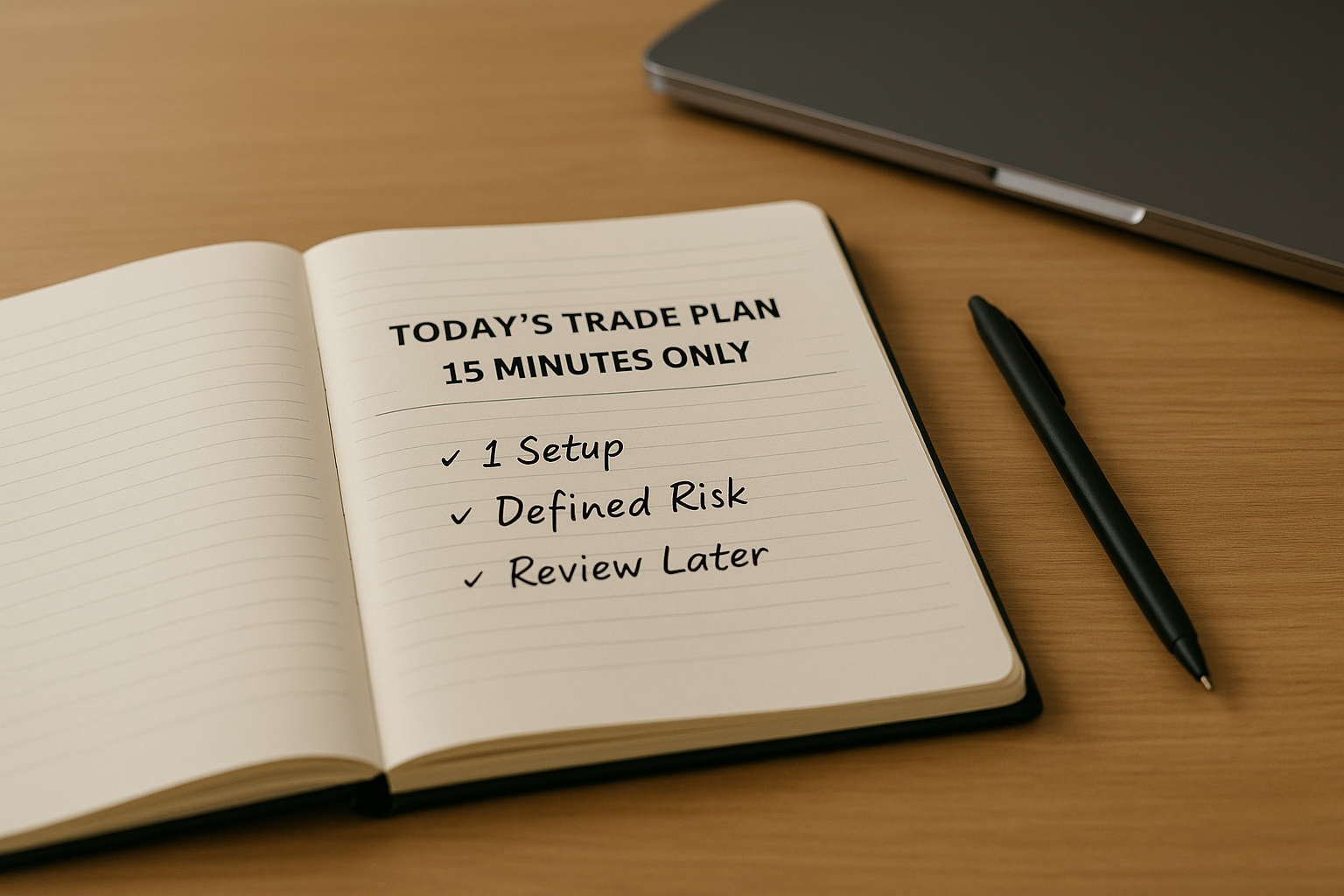Why the Market Tanked on “Bad” Jobs News

What last week’s selloff reveals about how indices really move—and how you can stay ahead
You might’ve seen the headline and kept scrolling
Another weak jobs report. Just 73,000 new roles added in July.
That usually sounds like a snoozer.
But this time, it moved nearly $2 trillion in value across U.S. stock indices—
a reminder that the market doesn’t just react to numbers.
It reacts to expectations, emotion, and the narrative investors build around both.
A closer look at what happened
On August 1, U.S. payroll growth came in far below forecast.
Just +73,000 jobs were added, and prior months were revised sharply lower.
Markets didn’t take it lightly.
- S&P 500 fell 1.6%
- Nasdaq dropped 2.2%
- Dow slipped 1.2%
Then came a second blow.
New U.S. tariffs on a wide range of imports reignited concerns over global supply chains and rising costs for major companies.
Together, these headlines sparked a fast, broad-based selloff.
Not just in individual stocks—but across entire indices, ETFs, and sectors.
Indices reflect more than fundamentals
If you invest in funds like VOO, SPY, or QQQ, this matters to you.
Because index moves reflect more than fundamentals—they reflect market mood.
When investors fear recession or margin pressure, even strong companies get dragged down.
That’s how diversified portfolios can drop—even when your stock picks seem solid.
These aren’t random swings.
They’re how the market re-prices risk and reality in real time.
Five actions to keep you grounded
- Zoom out when markets zoom down
A 1–2% drop rarely signals collapse.
It’s often just the crowd adjusting its outlook. - Know what’s inside your index
Large-cap ETFs are weighted toward giants like Apple and Microsoft.
If big tech stumbles, your entire ETF can feel it. - Buy on red if you’re building long-term
Volatility can be your ally.
Stick to your plan, and treat dips as discounts—not danger. - Don’t jump to rate-cut conclusions
Bad data doesn’t always mean relief is coming.
Sometimes it just signals caution ahead. - Reduce portfolio stress by zooming out
If checking daily feels tense, switch to weekly snapshots.
Your edge isn’t reactivity—it’s clarity.
A Question to Sit With
Do you know what your portfolio is reacting to—or are you just following the chart?
The Calm Comes From Knowing
You don’t need to predict headlines.
You just need to understand how they ripple through what you own.
Because when indices fall, they don’t fall randomly.
They fall as a group—tugged by fear, rebalanced by logic.
And when you see the market that way,
You stop feeling whiplashed—and start feeling prepared.
Strategies Worth Watching
Trading Shouldn’t Feel Like a Gamble

If you’ve ever stared at a chart with that sinking feeling — “What if this goes wrong?” — you’re not alone.
The fear of losing money is real.
But fear tends to take over when you don’t have a system.
That’s why I recommend checking out the Super Investor Club (SIC).
It’s a calm, structured space where everyday investors learn to trade with more confidence — not more stress.
Here’s what you’ll find inside:
✅ Step-by-step trade plans, including setups, risk levels, and strategy notes
✅ Real-world examples to show how pros manage downside
✅ Risk management tools that help you protect capital and avoid panic moves
✅ A calmer mindset — because confidence comes from process, not prediction
You can explore it free for 2 weeks.
No pressure. Just helpful insights.
👉 Try the Super Investor Club free for 2 weeks
P.S. If fear has been driving your trades lately — this might be your reset.